How to Replace a Toilet Wax Ring
The wax ring is the toilet part that forms an airtight seal that prevents water leaks at the base as well as sewer gas from escaping. When properly installed and well-taken care of, the wax ring can last for ages.
Wax rings are mostly replaced during toilet repairs or complete replacements. Once a wax seal has been used, you cannot reuse it again.
To replace the wax ring, detach the toilet, scrap off the old wax ring, check the flange for damages, install the new wax ring then finally set the toilet carefully back in place.
The following is a complete replacement procedure including the tools and supplies you need, the steps, tips to ensure it is properly installed and frequently asked questions.
1. Gather the Necessary Tools & Supplies
The tools and supplies required for replacement include;
- Adjustable wrenches
- A bucket
- A sponge
- A small hacksaw
- A toilet plunger.
- Replacement toilet wax ring
- Replacement toilet mounting kit
- Replacement water supply line hose
- Waterproof floor covering
- Plumbers tape
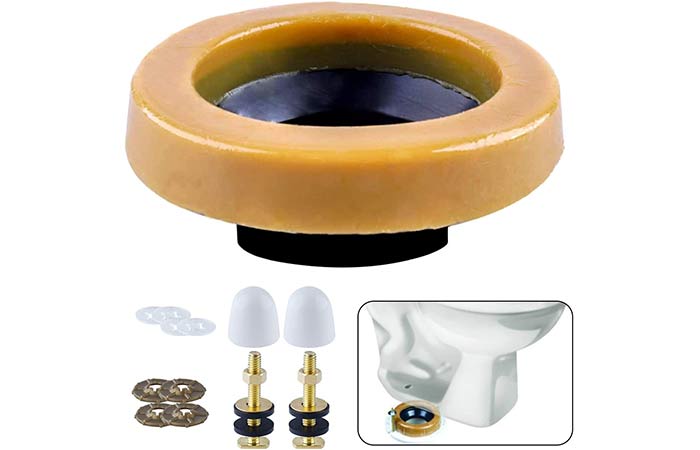
Before you install the new toilet wax ring, it is necessary to drain and remove the toilet. Here are a few steps on how to do that:
2. Empty the Toilet
Turn the water supply off by turning the valve in a clockwise direction. Remove the toilet tank lid and flush the toilet as you hold the toilet handle down so that as much water as possible drains from the tank and bowl.
Use a sponge or a water solidifier to temporarily solidify and water remaining in the bowl. You can also use a plunger to force down the remaining water in the bowl into the drain.
3. Detach the Toilet
Detach the water supply line hose from the toilet fill valve and the 3/8 compression nut. This helps in resetting the toilet after the wax seal is replaced. Use a utility knife to score away all the caulking around your toilet base.
Use a flathead screwdriver to remove the caps that cover the bolts and the washers. Remove the nuts and washers from the bolts at the toilet base using the adjustable wrench.
4. Move the Toilet
Grab the toilet under the sides of the bowl and rock it forth and back gently to break the old wax seal. Carefully lift it and place it on blocks. If the toilet is too heavy to carry, you can remove the bolts attaching the tank to the bowl and move the two parts separately.
5. Remove the Existing Wax Ring
Using a pair of waterproof cleaning gloves, scrap the wax seal off the base of the toilet and the toilet flange with a putty knife. Scrap of the caulk too on the toilet base and flooring too.
6. Inspect the Toilet Flange
Check the flange for cracks, decays and any other damage. repair it with a flange repair kit, if necessary. If you are replacing the old toilet bolts with new ones, put them in place now.
If you are using the old bolts, make sure that they are in good condition. Make sure the bolts are centered in with the toilet flange opening and parallel with the finished wall behind the toilet tank.
If the flange is in a good condition, proceed to the installation of the ring.
7. Install the Wax Ring Seal
Place the new wax seal on top of the toilet flange and make sure it is centered.
8. Position the Toilet
Reinstall the toilet by using the bolts as a guide. Hold the toilet as level as possible when placing it on the new wax seal. Avoid rocking the toilet. Use a side-to-side twisting motion until the toilet is resting on the finished bathroom floor.
9. Bolt the Toilet to the Floor
Put back the bolts and washers in the order and location that they were removed. Tighten the bolts a little at a time until the bowl is sitting firmly on the finished floor. Do not over-tighten the bolts because they might end up getting damaged or cracking the toilet bowl.
10. Reconnect the Toilet and check the Wax Ring
Apply fresh plumbers tape to the tank inlet threads and attach the water supply line. Turn on the water and let the tank fill before flushing the toilet. Place tissues around the toilet and flush the toilet severally.
If you notice water on the tissues, the wax seal is not sealed properly. Uninstall it and follow the installation process again. To be on the safe side, keep checking for leaks after an hour and also the next day just to be sure that the wax ring is sealed properly.
Further Reading: Symptoms of a Leaky Toilet Wax Ring
11. Seal the Toilet with Caulk
If there are no leaks, you can now seal the toilet floor with caulk. Leave a small opening in the back of the bowl facing the wall. If water comes from this opening then the toilet is leaking and has to be fixed.
Proper Toilet Wax Ring Replacement Tips
- A wet/dry shop vacuum empties toilet tanks and bowls quickly. Check the manufacturer’s instructions for how to set it up for suctioning water.
- Each time you replace the wax seal, you should replace the T-bolts that attach the toilet to the toilet flange.
- When replacing the ring, ensure that it is made of wax because wax resists bacteria and mold and also retains its sealing ability for long.
- If the toilet still rocks from side to side after replacing the toilet wax ring, then you might have a broken flange and you need to repair it.
- Do not overtighten the bolts because you could damage or crack the toilet bowl.
The following options t can also improve the wax’s performance
Wax Ring Cap
This item creates a frame that keeps wax in place hence avoiding the mess. A good product to try out is Next by Danco HCP110X Hydrocap Wax Ring Cap.
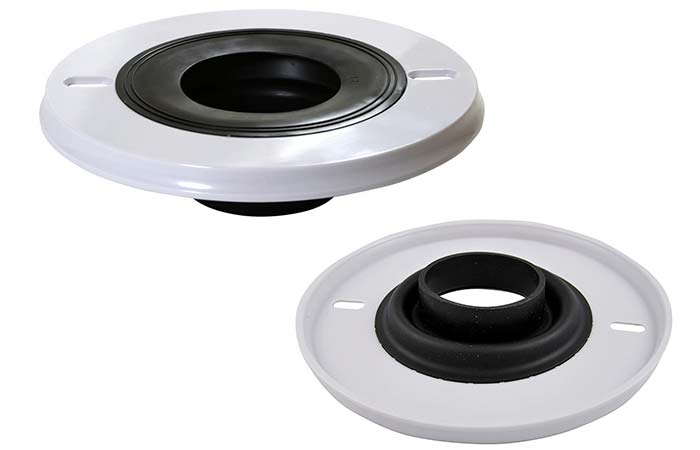
Features of the Danco cap include;
- Self-centering gasket grabs base of toilet for tight seal
- Stabilizes toilet bolts for easy toilet seating and allows for multiple resets
- For use with any pipe, toilet or collar size
- Deep drain funnel channels water into discharge pipe
You can also use felted or reinforced wax rings instead of the plain wax rings. The reinforced types come with a polyethylene flange that holds the wax’s its shape throughout time without breaking.
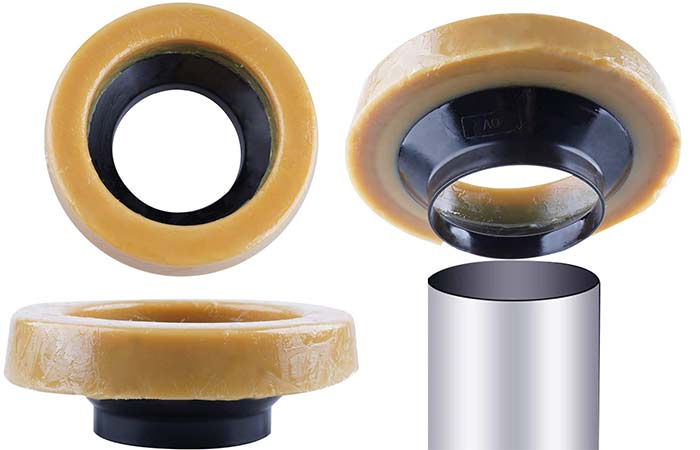
Which is the Best Wax Ring for Replacement?
When replacing a wax ring, choose one of a size that fits your toilet and one with features that can help minimize the amount of mess that wax is known for. Following are some of the wax rings available with their pros and cons.
Different Types of Toilet Wax Rings
The seals made of wax come in the following variations
Standard wax ring
This wax ring is the simplest and least expensive but messiest. It is one-size-fits-all. It is merely a ring of wax with a 3-4 diameter hole. They are either ¾ or 1 inch thick.
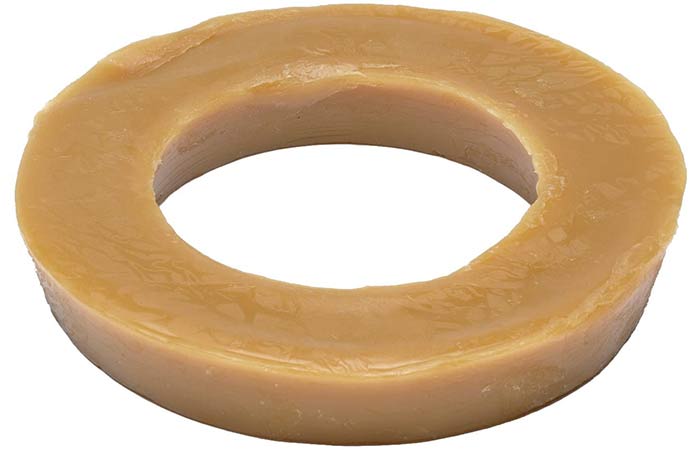
Wax ring with built-in flange opening
This type of wax ring is slightly expensive than the standard wax. It has an inbuilt rubber or polyethylene flange opening, called a horn/boot, which directs waste into pipes. This option is the best if your toilet flange sits neither too low below nor too high above the flow.
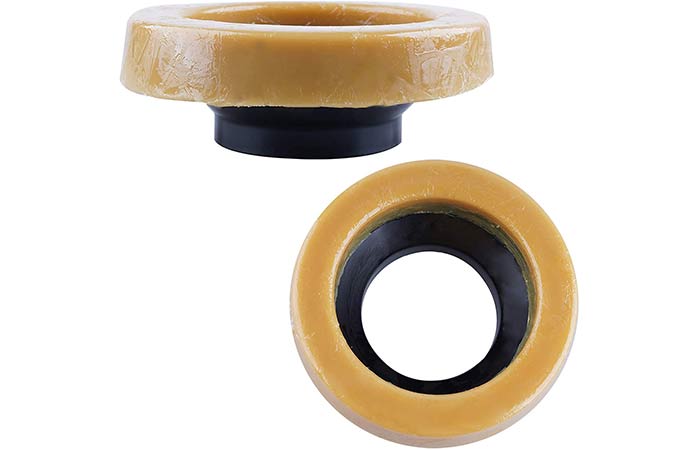
Extra-thick wax ring
This type of wax ring is best for a toilet flange that is recessed below the finished floor. It is better than the standard wax ring because it spans the distance and makes a seal. It has 40 percent more wax than the standard wax ring.
Two top-selling extra-thick wax rings include;
Fluidmaster 7513 Extra Thick Wax Toilet Bowl Gasket with Flange
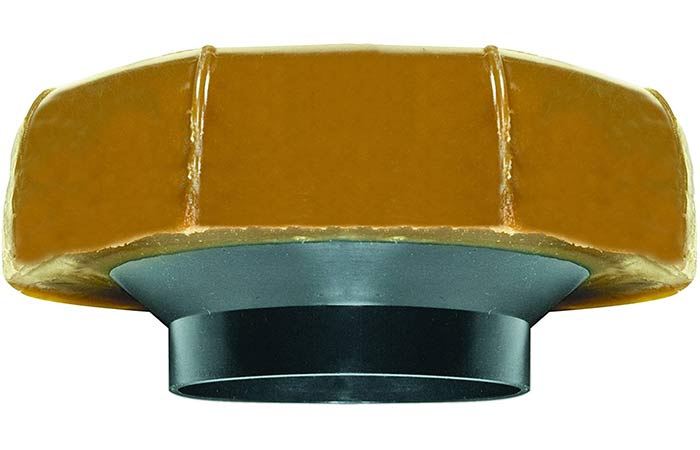
LASCO Extra Thick Toilet Wax Ring
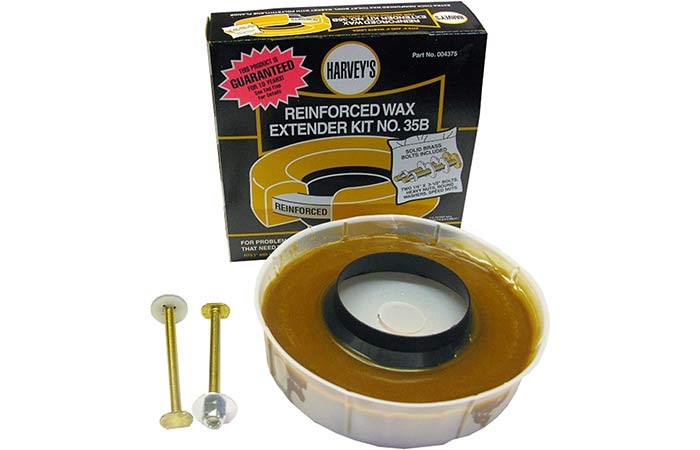
All-in-one Toilet Seal kit
This is an easy to use combo of rubber and wax. One of the most popular product of this kind is the NEXT BY DANCO All-in-one Toilet Seal
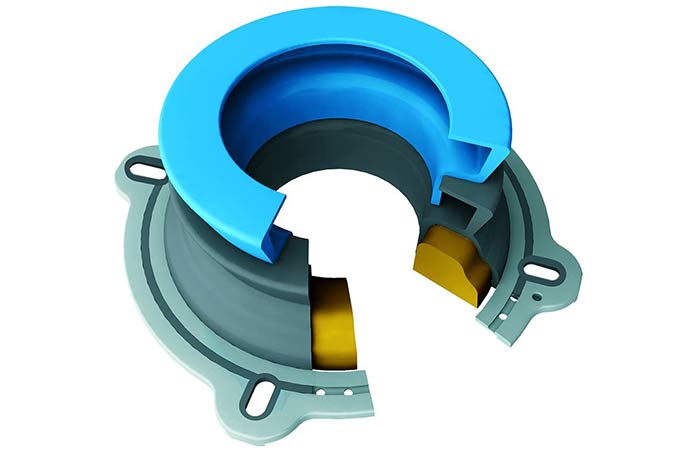
This Kit includes the Perfect Seal wax ring that is specially designed with a rubber gasket that encapsulates the wax creating a hassle-free as well as mess-free installation.
Wax-free options
If you are tired of wax, there are alternatives to wax rings that are completely wax-free. These seals are made of rubber, foam or a combination of both.
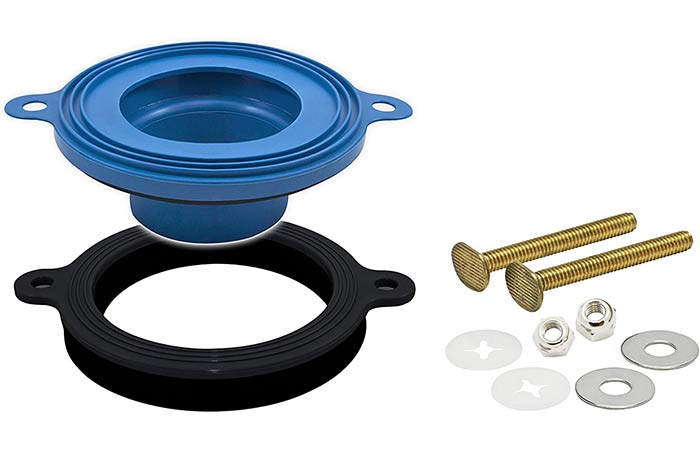
Do I put the Wax Ring on the Toilet or the Flange?
You can place it on the toilet flange, or fit it on the boot base of the toilet. It depends on the type of wax seal you have. For wax rings without rubber or polyethylene extension, the proper setup is to put the wax seal on the flange. You should not place it on the toilet since this placement is susceptible to leaks.
If you have a wax ring that comes with a flange extension, simply fit it on the boot base of the toilet
How much does it Cost to Replace a Wax Ring on a Toilet?
The total cost of a toilet wax ring replacement can range from $20 to $200 or more. The cost will depend on the type of ring, and whether you’re doing it on your own or hiring a professional plumber.
Doing it on your own is cheaper since most wax seals are cheap ($2 to $10) but there are other brands that may go for up to $35. Other parts like the closest flange may also need replacing, which, of course, will increase the total replacement cost.
If you are hiring a pro plumber to do the replacement, be prepared to spend more. Every plumbing company has its own price. Any additional task will also increase the price.
Toilet Wax Ring Lifespan-How long should Toilet Wax Ring Last?
Theoretically, a wax ring should last for as long as your toilet lasts or for an average of 20 to 30 years. However, it is important to remember that every time the toilet is removed for whatever reason, the wax ring has to be replaced. This means that the condition of your toilet matters.
Additionally, as mentioned earlier wax types of seals may break or spoil if exposed to heat. Aggressive plunging can also damage wax rings.
Faulty or compromised seals have to be replaced. Some signs of a faulty wax ring include wobbling toilet, odors and leaks from the toilet. Some signs of a faulty wax ring include wobbling toilet, odors and leaks from the toilet.
Will Bad Wax Ring Cause Toilet not to Flush?
Yes, a compromised wax ring can make your toilet not flush all way. If you use too much wax during the installation, the extra amount can disrupt the flow of waste resulting in a weak or no flush.
At the same time, if you do not align the wax properly during installation, a blockage is likely to occur. The block will in return result in a poor flush. However, the wax ring is not the most common cause of poor flushes; clogging is. Find more reasons your toilet will not flush in this article: Toilet Won’t Flush Well All the Way-when Clogged and when NOT Clogged
Toilet Still Leaking after Replacing Seal
The two main reasons your toilet will still leak just after replacing the seal include incorrect seal installation or the use of a wrong-sized seal.
Other possible reasons include;
- Clogging in the drain lines
- Damaged flooring under the your toilet
- Broken/loose t-bolts or toilet flange
- Cracked bowl
Do you have to Replace the Wax Ring when you Remove a Toilet?
Yes, whenever you remove a toilet, you have to replace the wax ring because the removal process completely breaks the seal. It is also quite obvious that wax will not reseal especially if it is old and made of wax. However, some wax-free seals can be reused.